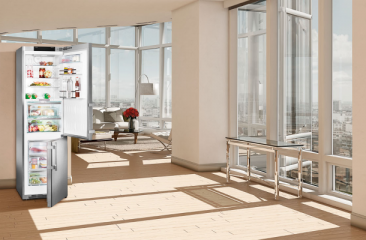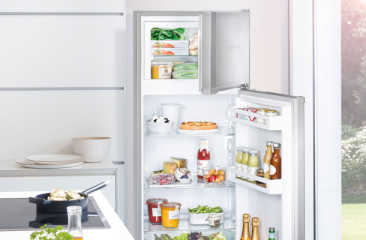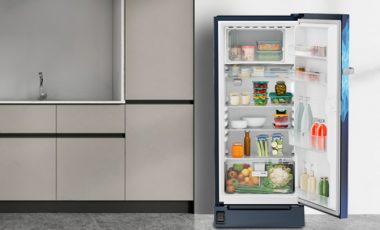Refrigeration and heating? How can these possibly go together? It seems a contradiction yet, in actual fact, refrigerators and freezers contain several heating systems, which fulfill different functions.

It’s a well-known fact that opposites attract and so, perhaps it shouldn’t be a surprise that the concept of heating has a completely justified place in the world of refrigeration and freezing! You’ve maybe noticed that the back of your refrigerator is warm. This is because the heat extracted from the fridge interior has to be expelled in some way. In this post, we’ll explain why refrigerators have active heating systems and the roles these play in the refrigeration process.
Generally heating systems four functions:
1. Condensation prevention
It’s a basic fact that humidity will condense on the coldest surfaces. Perhaps you have seen this in your bathroom, after a hot shower, when condensation appears on the windows and mirrors and runs down. A similar effect occurs in a refrigerator. When the appliance door is opened warm outside air meets cold interior air and condensate can form on the door seal. By carefully guiding the coolant, which has been heated by compression, through pipes positioned at places that are susceptible to condensation (e.g. the door seal), the surface temperature can be locally increased which prevents condensation forming in that area. Strictly speaking, this is not so much a heating system but rather a sophisticated use of the waste heat.
2. Temperature control
In ‘single circuit appliances’ and appliances with a 4-star freezer compartment, temperatures are usually regulated according to refrigeration compartment temperature. When ambient temperatures fall, an issue arises because the refrigeration compartment will not need to be cooled as regularly and this means that the associated 4-star freezer compartment can then become too warm. In such cases, the refrigeration compartment is artificially heated by a light bulb or an electrical heater to force the refrigerator to cool down more frequently and thus keep the 4-star freezer compartment sufficiently cool.

3. Evaporation of condensate
If the waste heat from the compressor is insufficient to evaporate the condensate on its own, a condensate drain pan heater is installed. This means that the coolant heated by the compressor is fed through a pipe that runs through the condensate drain pan in order to optimally heat the condensate and speed up evaporation. Once again, this system again makes sophisticated use of the waste heat – meaning that no additional energy it is required.
4. Defrosting the evaporator
Many Liebherr NoFrost appliances have an electrical defrost heater to remove any ice build-up on the evaporator. This heater is controlled according to user habits (e.g. door opening) with defrosting only occurring if there is a build-up of ice – which lessens, of course, the impact on overall energy consumption. On some models, the defrost heater uses the waste heat from hot gas to achieve defrosting without any additional energy input.
Explore the refrigerator that matches your need at home.liebherr.com and locate your nearest dealer. You can reach us at 18002333444 for more information.

